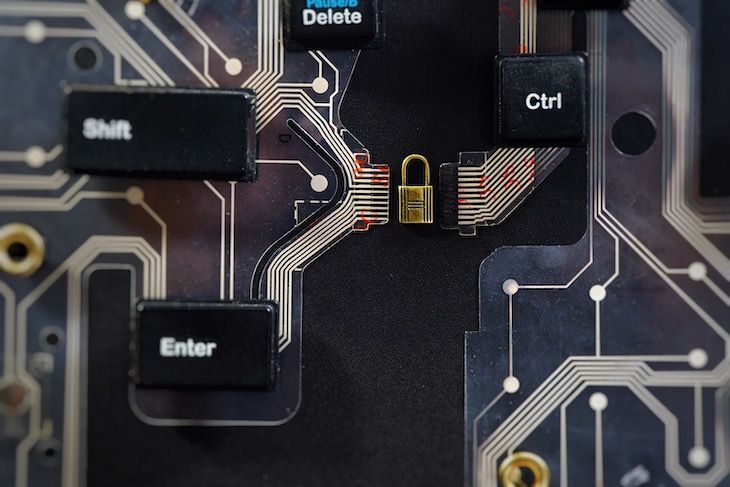How to Build a Solid Incident Response Team


In today's increasingly digitized world, nearly every aspect of our personal and corporate lives is connected to the internet, making cyber security an essential component of ensuring the safety and security of our organizations and all of our professional activities.
One of the most important steps you can take to protect your organization's cybersecurity posture and respond to incidents quickly and effectively is creating a solid cybersecurity incident response team.
In this article, we'll take a look at the basic steps you need to take to build a successful incident response team.
Incident management and response is the process of identifying, triaging, and responding to security incidents within an organization.
This process typically involves a dedicated team of security professionals who are responsible for detecting potential security threats, assessing their severity, and taking the appropriate actions to mitigate and resolve cyber incidents.

A cybersecurity incident response team (CSIRT) is a group of individuals in charge of responding to and managing cybersecurity incidents within an organization.
The team is typically made up of IT security professionals who have the necessary skills and expertise in security incident detection, investigation, and resolution. These individuals should be able to work together seamlessly to quickly and efficiently respond to incidents and prevent further damage.
The responsibilities of CSIRT are to minimize the impact of a cyber attack on the organization and its stakeholders and to restore operational functionality as quickly as possible.
In line with the organizational structure of security monitoring and incident response, an incident response security team may also be responsible for various activities, such as isolating affected systems, conducting incident investigations, communicating with stakeholders, and developing security procedures to prevent future incidents.
Building a solid incident response team is vital because it helps organizations respond quickly and effectively to security incidents. An effective CSIRT can minimize the impact of a security breach and help the organization recover from the incident more quickly.
This can help protect the organization's assets, as well as the sensitive information of its stakeholders.
According to IBM, in 2022, on average, it took nearly 9 months to identify and deal with a data breach. Reducing this time to 200 days or less can save significant money that could be spent on different investment channels.
Additionally, incident monitoring with a dedicated team can improve the organization's overall security posture, as the team can develop and implement policies and procedures to prevent future incidents from occurring.
Furthermore, an effective incident response team can help the organization maintain its reputation and trust with its stakeholders.
According to Forbes' Insight Report, nearly half (46%) of all organizations suffer from reputational damage after a data breach.

Building a solid incident response team requires careful planning and execution. By following these 6 tips, organizations can build an effective incident response team that is prepared to handle any incident that may arise.
The first step in building an incident management system and incident response team is to assess the organization's current security posture and identify gaps or vulnerabilities that will require the expertise of a dedicated team.
This could involve analyzing the organization's current security protocols and incident response procedures, as well as assessing the potential risks and impacts of a cyberattack.
Once the need for an incident response team has been identified, the next step is clearly defining the team's roles and responsibilities.
This process includes determining the skills and knowledge that people who will be responding to incidents should have, as well as determining the specific tasks and actions they will be expected to perform.
It is also helpful to develop a detailed incident response plan outlining the team's procedures and protocols for responding to various incidents.
To be effective, a cybersecurity incident response team should consist of individuals with diverse cybersecurity skills and expertise.
This could include individuals with backgrounds in network security, data analysis, incident response, and expertise in specific technologies or systems.
Having a diverse team is crucial in ensuring that the team can handle a wide range of potential incidents.
Incident response is a complex and error-prone process that requires many experts to work in harmony, and therefore, requires special knowledge and skills.
For the whole process to flow smoothly, team members must receive the training and resources to understand their roles and fulfill their responsibilities.
This could include training on incident response protocols and procedures, as well as access to educational information resources, specialized tools, and technologies to help the team respond quickly and efficiently to incidents.
During an incident, the incident response team must be able to communicate quickly and effectively with internal actors, such as other members of the organization, and external stakeholders, such as other organizations.
To facilitate this, it is critical to establish clear communication protocols, including identifying communication channels and appointing specific people to coordinate the team's efforts.
Cybersecurity dynamics are changing every day. Consequently, the capabilities of even the most skilled and experienced professional teams may become outdated over time.
Therefore, it is essential to regularly test and review the team's incident response capabilities to identify their needs and keep the team in their best form.
Additionally, regular testing and reviews can help identify and patch any weaknesses in the team's cyber attack and data breach incident detection and response processes.

Having robust incident response automation tools are game-changers for cybersecurity incident response teams because they enable the team to detect, investigate, and respond to incidents much more quickly and efficiently.
Next-gen cybersecurity tools powered by innovative technologies, like security information and event management (SIEM) technologies, can radically help the team identify potential threats, collect and analyze relevant data, and take appropriate action to mitigate the impact of an incident.
Logsign SIEM offers exceptional data collection and analysis possibilities, advanced event logging capabilities, and unique incident management and response features. It enables organizations to detect and respond to security incidents in milliseconds and provides a holistic reinforcement of the security posture.
If your organization needs a data-driven and agile cyber incident analysis and response solution to stand firm against all cyber security threats, you can experience Logsign SIEM in action by getting a live demo.